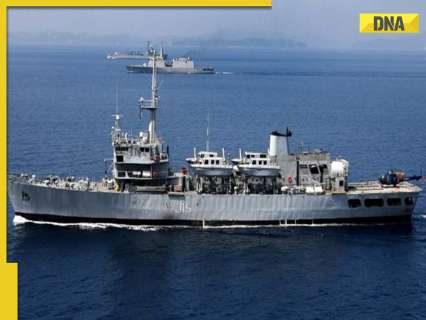
Much like the solidarity between the United States and NATO forged during World War II, India and Bangladesh share a bond rooted in their collective fight for Bangladesh’s liberation in 1971.
The Bond Forged in Sacrifice
Strategic alliances often arise from shared struggles against oppressive forces, as evidenced by the deep ties between India and Bangladesh. Much like the solidarity between the United States and NATO forged during World War II, India and Bangladesh share a bond rooted in their collective fight for Bangladesh’s liberation in 1971. This partnership, born out of a shared mission to end the atrocities perpetrated by the Pakistani regime, culminated in the creation of an independent Bangladesh. The historic victory, marked by the Indian Armed Forces’ decisive intervention alongside the Mukti Bahini, is commemorated annually as Bijoy Dibos in Bangladesh and Vijay Diwas in India.
This relationship, however, extends beyond shared sacrifices. It is nurtured by common cultural, linguistic, and culinary traditions, creating a unique camaraderie that transcends political transitions and regional challenges. As the 54th anniversary of this historic event approaches, the enduring partnership continues to defy naysayers, standing resilient amidst geopolitical fluctuations.
Expanding Cooperation: A Multi-Dimensional Partnership
Economic Ties
India and Bangladesh have cultivated a robust economic partnership, with Bangladesh emerging as India’s largest trade partner in South Asia. Bilateral trade, valued at over USD 14 billion, reflects their shared economic ascent. This success is bolstered by initiatives in energy and power cooperation, as well as infrastructure projects aimed at enhancing road, rail, and inland waterway connectivity. These developments underpin the vision of a prosperous, interconnected South Asia.
Defence and Maritime Security
Defence collaboration between the two nations is equally significant. Bangladeshi military personnel routinely attend prestigious Indian defence institutions, while Indian officers participate in training programs in Bangladesh. This cross-pollination of expertise underscores their shared commitment to regional stability.
Given the Bay of Bengal’s prominence as their shared maritime domain, India and Bangladesh face similar challenges, including illegal fishing, drug trafficking, human smuggling, and climate-induced disasters. The resolution of the maritime boundary dispute in 2014 has further facilitated cooperation, leading to joint efforts to safeguard their waters.
Maritime Partnerships: Anchoring Bilateral Ties
The Indian and Bangladeshi navies exemplify the spirit of maritime collaboration. Annual coordinated patrols and the Bongosagar naval exercises have enhanced their interoperability. Training exchanges have strengthened professional ties, with Bangladesh’s current Chief of Naval Staff being an alumnus of India’s Navigation and Direction School in Kochi.
Notable milestones include the Indian Navy’s significant participation in Bangladesh’s International Fleet Review in 2022, marking the birth centenary of Sheikh Mujibur Rahman. Reciprocally, Bangladesh Navy’s participation in India’s multinational MILAN exercises and the Goa Maritime Symposium underscores their shared vision for combating non-traditional threats in the region.
The establishment of a Bangladeshi liaison officer at India’s Information Fusion Centre – Indian Ocean Region (IFC-IOR) in 2023 represents a leap forward in maritime information sharing and transparency. Additionally, under India’s SAGAR (Security and Growth for All in the Region) initiative, India has supported Bangladesh in strengthening its maritime security apparatus.
Bangladesh’s leadership in forums like the Indian Ocean Naval Symposium (IONS) further highlights its role in fostering regional maritime cooperation. Its participation in joint efforts reflects a commitment to addressing shared challenges and ensuring maritime safety.
Humanitarian Assistance and Disaster Relief (HADR)
The Bay of Bengal’s susceptibility to cyclones has necessitated swift and coordinated responses. The Indian Navy has consistently extended humanitarian assistance to Bangladesh, exemplifying its role as a net security provider in the region. During Cyclone Mora in 2017, for instance, INS Sumitra rescued 27 Bangladeshi citizens adrift at sea. Similarly, the Indian Navy played a critical role in evacuating over 300 Bangladeshi nationals from Yemen during the 2015 civilian evacuation operations.
These efforts underscore the Indian Navy’s commitment to regional stability and the well-being of Bangladeshi citizens, reinforcing the bonds of trust and partnership between the two nations.
Future Outlook: Navigating a Shared Destiny
The maritime domain remains a vital conduit for advancing India-Bangladesh relations. With shared challenges and opportunities, both nations are poised to deepen their collaboration, leveraging their maritime assets for mutual benefit. Initiatives like enhanced battlespace transparency, joint exercises, and coordinated responses to non-traditional threats will likely define the trajectory of this partnership.
In the face of geopolitical pressures and external adversities, the India-Bangladesh relationship endures as a testament to resilience and mutual respect. As the two nations prepare to celebrate Vijay Diwas and Bijoy Dibos, the participation of Bangladeshi freedom fighters in Kolkata’s commemorative events serves as a poignant reminder of their shared history and enduring partnership.
The maritime realm will undoubtedly continue to anchor this relationship, fostering a stable and secure Bay of Bengal and ensuring that the sacrifices of 1971 pave the way for a prosperous and harmonious future.
(The author of this article is a Defence, Aerospace & Political Analyst based in Bengaluru. He is also Director of ADD Engineering Components, India, Pvt. Ltd, a subsidiary of ADD Engineering GmbH, Germany. You can reach him at: girishlinganna@gmail.com)
(Disclaimer: The views expressed above are the author’s own and do not reflect those of DNA)
